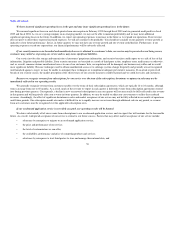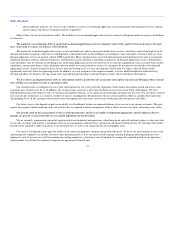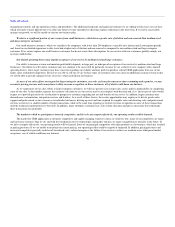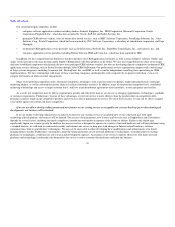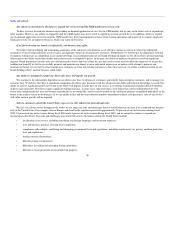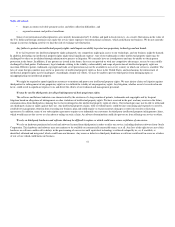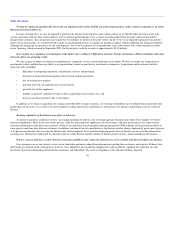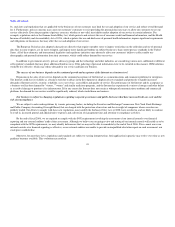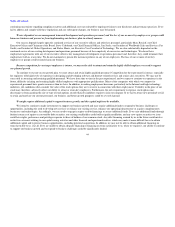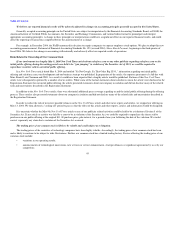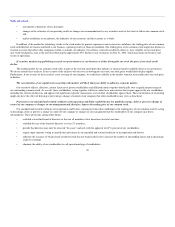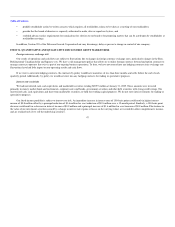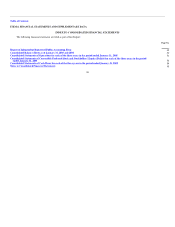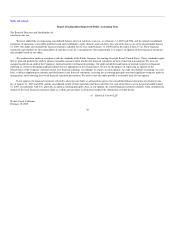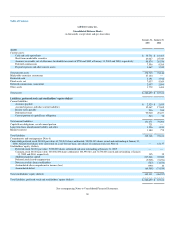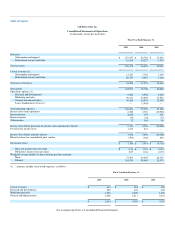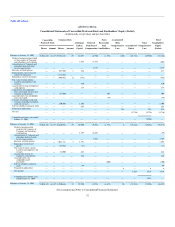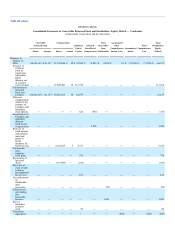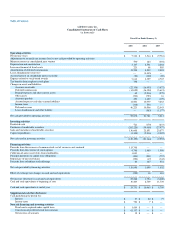Salesforce.com 2004 Annual Report Download - page 50
Download and view the complete annual report
Please find page 50 of the 2004 Salesforce.com annual report below. You can navigate through the pages in the report by either clicking on the pages listed below, or by using the keyword search tool below to find specific information within the annual report.
Table of Contents
• recruitment or departure of key personnel;
• changes in the estimates of our operating results or changes in recommendations by any securities analysts that elect to follow our common stock;
and
• market conditions in our industry, the industries of our customers and the economy as a whole.
In addition, if the market for technology stocks or the stock market in general experiences uneven investor confidence, the trading price of our common
stock could decline for reasons unrelated to our business, operating results or financial condition. The trading price of our common stock might also decline in
reaction to events that affect other companies within, or outside, our industry even if these events do not directly affect us. Any volatility in our stock price
may result in litigation, such as the lawsuits following the approximate 25% decline in our stock price on July 21, 2004, which may harm our business and
results of operations.
If securities analysts stop publishing research or reports about us or our business or if they downgrade our stock, the price of our stock could
decline.
The trading market for our common stock relies in part on the research and reports that industry or financial analysts publish about us or our business.
We do not control these analysts. If one or more of the analysts who do cover us downgrade our stock, our stock price would likely decline rapidly.
Furthermore, if one or more of these analysts cease coverage of our company, we could lose visibility in the market, which in turn could cause our stock price
to decline.
The concentration of our capital stock ownership with insiders will likely limit your ability to influence corporate matters.
Our executive officers, directors, current 5 percent or greater stockholders and affiliated entities together beneficially own a significant percentage of
our outstanding common stock. As a result, these stockholders, acting together, will have control over most matters that require approval by our stockholders,
including the election of directors and approval of significant corporate transactions, even if other stockholders oppose them. This concentration of ownership
might also have the effect of delaying or preventing a change of control of our company that other stockholders may view as beneficial.
Provisions in our amended and restated certificate of incorporation and bylaws and Delaware law might discourage, delay or prevent a change of
control of our company or changes in our management and, therefore, depress the trading price of our common stock.
Our amended and restated certificate of incorporation and bylaws contain provisions that could depress the trading price of our common stock by acting
to discourage, delay or prevent a change in control of our company or changes in our management that the stockholders of our company may deem
advantageous. These provisions among other things:
• establish a classified board of directors so that not all members of our board are elected at one time;
• establish the size of the board of directors at seven (7) members;
• provide that directors may only be removed "for cause" and only with the approval of 66 2/3 percent of our stockholders;
• require super-majority voting to amend some provisions in our amended and restated certificate of incorporation and bylaws;
• authorize the issuance of "blank check" preferred stock that our board could issue to increase the number of outstanding shares and to discourage
a takeover attempt;
• eliminate the ability of our stockholders to call special meetings of stockholders;
46


